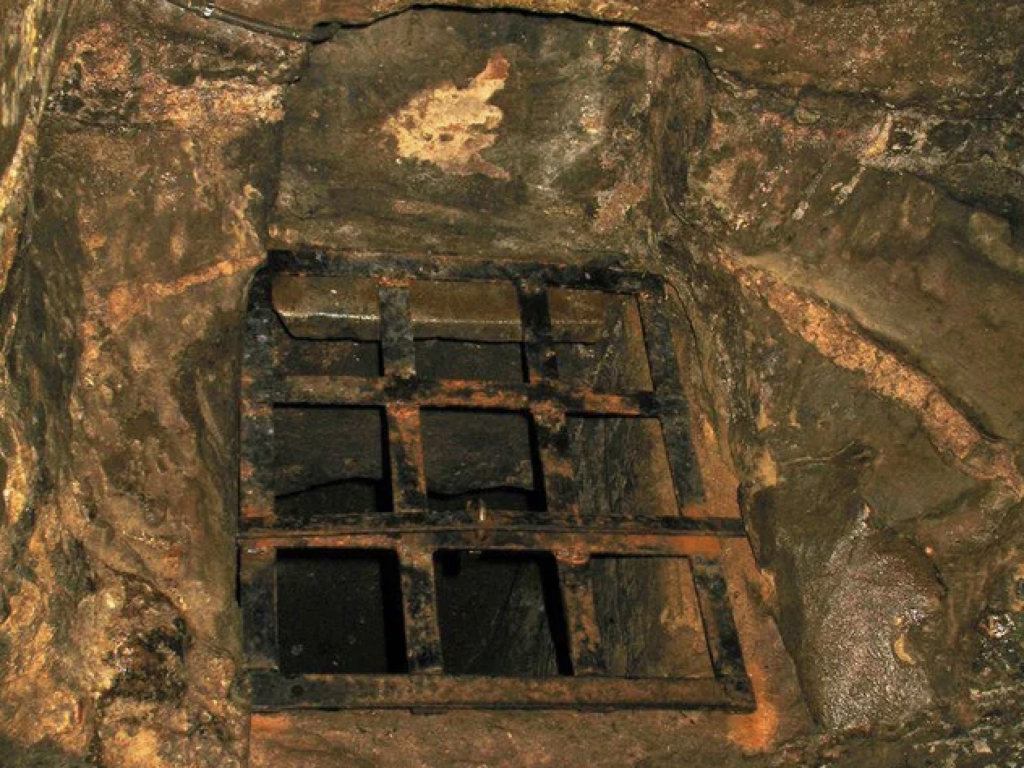Last updated on January 25th, 2023 at 02:28 am
The medieval world was full of tales of supernatural and magical occurrences. Many of these stories were later collected by antiquarians in the eighteenth and nineteenth centuries, individuals like the Brothers Grimm and Hans Christian Andersen, each of which collected and recorded these centuries-old folklore tales before their memory was forgotten entirely.
England has its version of these pastoral and mythical tales, not least the Arthurian Cycle of the legendary King of Camelot.
But sometimes, we are presented with a story that transcends the line between folklore and history. Such is the case with the Green Children of Woolpit.
The Story of the Green Children of Woolpit
The Green Children of Woolpit were two children, a boy and a girl, brother and sister. They were discovered at Woolpit near Bury St Edmunds in Suffolk in eastern England around 1150.
According to accounts provided by two contemporary historians, William of Newburgh in his Historia Rerum Anglicarum and Ralph of Coggeshall in his Chronicum Anglicanum, the two children were discovered by locals of Woolpit who were struck by the greenish color of the two children’s skin.
They also spoke a language that they could not understand. They seemingly had no names to communicate to those who had found them.
But it got stranger still, for after a certain period, once they had adjusted to their new surroundings and could communicate with the English locals, the girl explained that they had come from an underground world inhabited by green people called St. Martin’s Land.
One could be forgiven for simply dismissing this story as a legendary fable. Indeed, there is a major argument that the tale of the Green Children of Woolpit is simply a piece of Anglo-Saxon folklore carried through to the twelfth century. But there is substantial evidence to suggest that this incident occurred.
The two individuals who wrote about it, William of Newburgh and Ralph of Coggeshall, were contemporaries of these events who lived in the twelfth century.
Thus, they were writing when these events were fresh in memory rather than just reciting a folktale they had heard.
Moreover, Ralph of Coggeshall was the abbot of a Cistercian monastery just over 40 kilometers from Woolpit. As such, he was reporting on occurrences in his region and would doubtlessly have been acquainted with individuals who had direct first-hand experience of the children and their strange appearance in Suffolk.
Where did the Green Children of Woolpit come from?
So if we allow that two children did indeed suddenly appear at Woolpit in the mid-twelfth century bearing a greenish hue and speaking a foreign tongue, then how might we explain their surprise arrival there?
More importantly, why were they speaking an unknown language, and why was their skin green?
One theory to explain this is that the children suffered from arsenic poisoning. In this interpretation, the children had been left at Woolpit in a forest by their minders to die.
Arsenic poisoning will alter an individual’s skin tone, and high toxicity will cause delirium, which would account for the children speaking effectively gibberish rather than an alien language.
Another plausible medical theory holds that the boy and girl were suffering from chlorosis, a type of iron deficiency brought on by the kind of malnutrition that was common in medieval times. This can lead to sufferers developing a greenish complexion and cannot be ruled out.
However, while these medical theories are plausible, they do not explain every aspect of the appearance of the children and what they subsequently said about coming from the underworld. But one other theory does offer a plausible explanation for everything.
Were The Green Children of Woolpit simply Immigrants?
This holds that the Green Children of Woolpit were related to some immigrants who had arrived in England in the twelfth century from the part of the Low Countries then known as Flanders and which now approximates the northern part of Belgium.
Flemish immigrants like these were persecuted in England as they arrived there in considerable numbers in the first half of the twelfth century. As a result, the children’s parents were possibly killed, leaving them alone in a strange land speaking a foreign tongue.
Their later description of coming from an underworld was a statement they subsequently made in trying to explain they had come from the south. The green hue to their skin was most likely from malnourishment.
This would certainly explain why their skin color is said to have improved in the following weeks after the Suffolk community they were living in began feeding them properly rather than subsisting on broad beans as the children claimed to have been doing before their discovery.
So there we have it. The most likely explanation is that the Green Children of Woolpit were two malnourished children from Flanders who spoke Flemish rather than an alien language.
Whatever the origin of the children, we do know what happened subsequently. The boy sadly seems to have died shortly after the pair had been taken into the household of a local squire called Richard de Calne. However, the girl was acclimatized to her new surroundings and was baptized.
She is probably synonymous with Agnes Barre, who was later living in the region and had married a man at King’s Lynn. However, it is difficult to be sure, as with so much else concerning the mysterious Green Children of Woolpit.
Sources
Duncan Lunan, Children from the Sky (London, 2012); John Clark, ‘Small Vulnerable ETs: The Green Children of Woolpit’, in Science Fiction Studies, Vol. 33, No. 2 (2006), pp. 209–229.
Jeffrey Jerome Cohen, ‘Green Children From Another World, or the Archipelago in England’, in Jeffrey Jerome Cohen (ed.), Cultural Diversity in the British Middle Ages: Archipelago, Island, England (Basingstoke, 2008), pp. 75–94.
Paul Harris, ‘The Green Children of Woolpit: A 12th Century Mystery and Its Possible Solution’, in Steve Moore (ed.), Fortean Studies, No. 4 (London, 1998), pp. 81–95.

